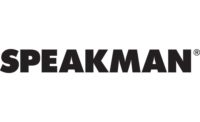Master Sergeant Chad Lingerfelt, a veteran ground safety manager for the U.S. Air Force, is responsible for personnel who dismantle, clean and reassemble aircraft all over the world. Since his team members could require emergency treatment anywhere, from the open, sandy desert of a foreign country to a confined space in an airplane hangar, Lingerfelt prefers self-contained portable emergency eyewash stations.
“The portable station is available whenever and wherever we need it, without worry of contamination,†he says. “They include buffered saline solution in sealed cartridges.â€
Readily available
With hundreds of portable emergency eyewash stations at Air Force bases, Lingerfelt believes his choice best meets the safety and comfort needs of employees, especially in an airplane hangar. Lingerfelt eliminated plumbed stations in order to comply with American National Standards Institute (ANSI) standards that state all eyewash stations must be in accessible locations requiring no more than ten seconds to reach.In addition, OSHA, ANSI and the National Society to Prevent Blindness recommend that emergency eyewash stations be readily available, in accessible locations, and free of obstructions that inhibit immediate use of the equipment.
Accessibility and water availability raised concerns for Lingerfelt since ANSI’s Z358.1-1998 standard mandates that if stations use water, they must use tepid water as the flushing fluid instead of a dedicated cold-water source. Furthermore, the standard recommends that self-contained eyewash stations use a preserved, buffered saline solution rather than tap water because medical experts find municipal water sources less than ideal for flushing eyes.
Lingerfelt also reviewed comfort levels among stations. While plumbed and self-contained stations meet industry standards, each provides a different level of comfort. Lingerfelt chose a self-contained, gravity-fed station that dispenses a soft ribbon of purified, contaminant-free solution, physiologically balanced to match human tears — offering greater comfort than water or any other solution.
What’s in the water?
In the analysis of water versus solution, medical experts agree water has the potential to increase damage to an injured eye in some cases.“We found that flushing with tap water damaged three or more layers of the protective corneal epithelial,†says Dr. Roger Beuerman, Professor of Ophthalmology, Louisiana State University (LSU) Health Sciences Center. “But, flushing with a buffered, saline solution caused less damage to the epithelial cells of the eye, resulting in a quicker healing and recovery time.â€
In contrast to tap water, saline solutions available in some portable emergency eyewash stations contain an anti-microbial preservative proven to reduce the likelihood of increasing damage to an injured eye. Most solutions combine select preservatives, including bactericide, fungicide and algaecide additives, to inhibit bacterial growth. While these additives will inhibit bacterial growth, no preservative will prevent build-up over an extended period of time.
Easy and efficient
In addition to concerns about contaminants in airbase water supplies, Lingerfelt and most safety directors want an easy-to-use station. This usually requires a comfortable, hands-free setting that allows the eyewash fluid to irrigate and flush both eyes simultaneously while the injured worker holds both eyes open in the stream of fluid.
The flushing activity, also regulated by ANSI, requires all eyewash stations to produce a stream of flushing fluid not less than 0.4 gallons per minute (gpm) for at least 15 minutes. Basically, the unit’s flushing stream cannot decline in fluid pressure during the 15-minute timeframe because it would not fully comply with ANSI emergency eyewash standards. Furthermore, the fluid must continually flush until it is intentionally turned off, and the on-off valve must be activated in one second or less.
Operational issues
Meeting safety standards is just one part of the safety director’s review process in choosing the type of eyewash station that’s best for employees. In addition, the unit’s flushing fluid and required maintenance can influence cost of operation. Here are some operational issues to consider:
In addition, plumbed eyewash units require weekly activation to verify proper operation and to flush away any build-up that formed as a result of stagnant water, according to ANSI. If bacteria or mold accumulate in the station, these contaminants can easily be flushed into an injured eye.
